The peace corner is a powerful and touching space in the classroom that supports self regulation.
It’s private. It’s structured. It includes choice. It’s an experiment. It’s inviting. It’s a movement toward independence onto the mat (or the desk or the rug spot) and ultimately into everyday life. It’s called the “peace corner” because there is something peaceful about simply being allowed to experience our feelings and take care of our self in the way that is right for us. The use of a peace corner can transform the culture of the classroom. In this article, we’ll look at why it’s so powerful and how you can create this space for your students.
A peace corner is private
There can be many reasons our students might need alone time to manage their feelings at school. Often times being in a group context is overwhelming to our students’ nervous system, especially given the length of time children spend at school. Something is happening inside of them, and processing that something might be overwhelming with others looking on. Being in a large group context can invite the feeling of being over stimulated. Even as adults, 5-10 minutes of quiet, alone time can do wonders for our level of participation in a group experience
This privacy also allows students to develop agency. I find that I rarely ask students to go to the peace corner anymore. I may gently nudge a student to go. Self regulation looks like students initiating the experience. Mostly, students show the peace sign and I respond with a non-verbal cue for the student to leave the group and go to the peace corner. This private communication is more about me being aware of what is happening in the room and instruction not stopping than an ask for permission. I rarely say no when students show me the signal. I also ask students to show the peace sign at their heart so that it isn’t an announcement to the whole class, but a communication between us.
A peace corner is structured
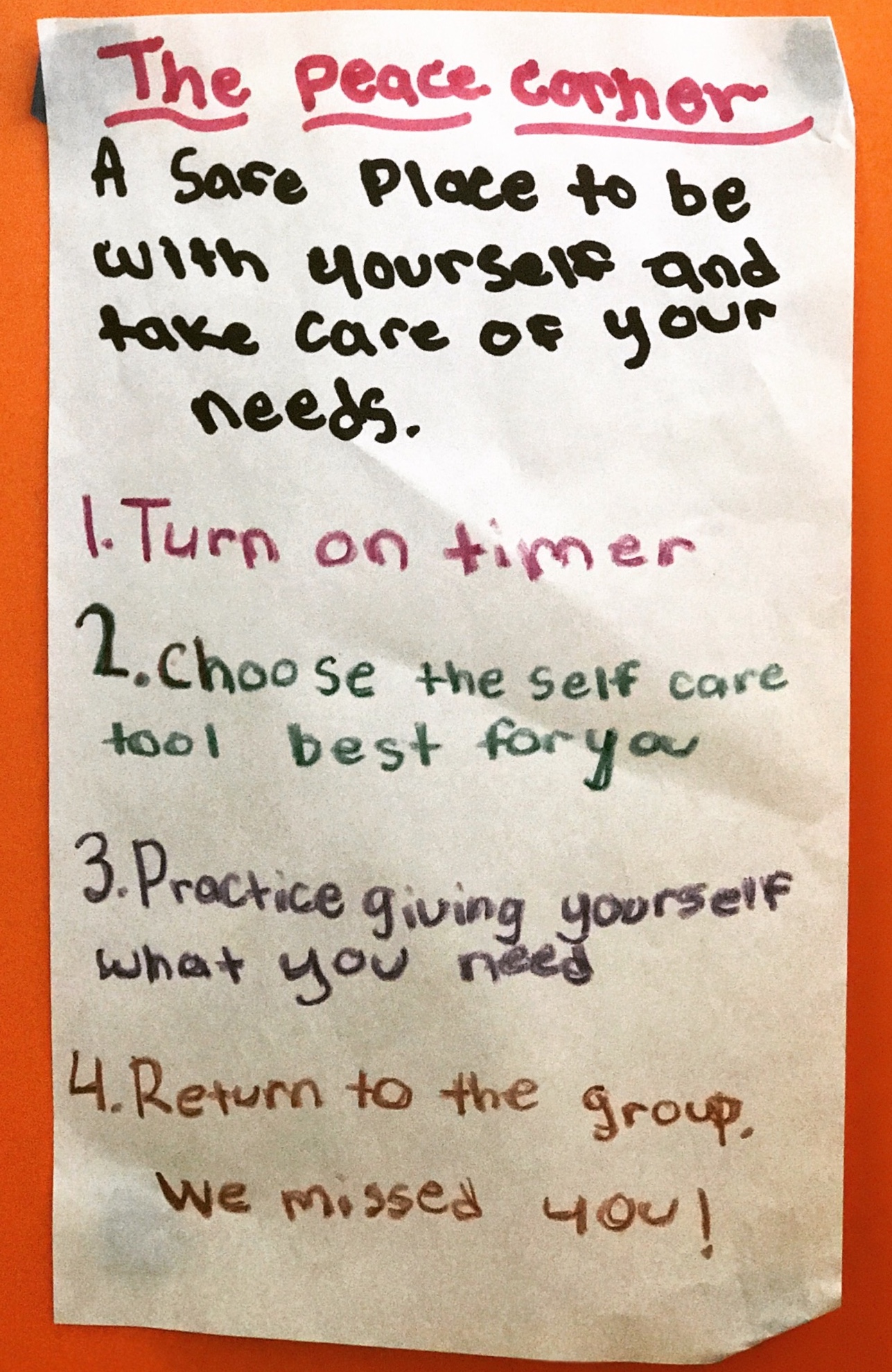
As we know, children crave boundaries to guide their explorations. I find a timer essential to guide students time in the peace corner. I include choice by providing 5 different sand timers so students can choose which one will meet their needs at the start of their peace corner experience. At the beginning of the year, I explain if they need more time to let me know, but it’s not a place to stay forever. It’s important to be intentional about emphasizing that the peace corner isn’t a place for escaping learning. It is a space that allows for students to check in with themselves, experience a break, and re-establish learning readiness.
I describe the peace corner to students as a place to help manage feelings by exploring strategies that can give us what we need and in turn help us feel ready to learn again when it feels like the learning has stopped.
As with any routine in our classroom, I explain the purpose at the beginning of the year, have students model how to use the peace corner, and revisit our agreements around its purpose when needed. In order to prevent the impulse for students to ask to go simply out of curiosity, it is helpful to offer all students a chance to explore the peace corner on their own at least once at the beginning of the year. Once the routine is up and running, it can also be useful to have a sign in system so that we are aware of how often students are requesting to leave the group.
A peace corner is an experiment
Since we all need different things at different times, there isn’t one magic thing that students practice in the peace corner. Students get to explore things on their own and get a sense of what works best. This year I’ve decided that I want students to report to me privately what self care tool they used in the peace corner and if it worked or not. This is often completed through a letter or a quick check in. This emphasizes the purpose and function of the space as well as an integration of reflection and will help me support them!. There are many options on strategies and implementation but the activities should be practiced as a class before we can ask students to try them on their own.
A key element of the peace corner is choice to facilitate openness and curiosity toward self care.
VIDEO SAMPLE – Student choosing mindful breathing
VIDEO SAMPLE – Student choosing a self hug (self-love)
Mindful Teaching with the Peace Corner
The last thing I want to offer about my experience with the peace corner is a sense of kind awareness toward yourself (as the teacher) when a student asks to utilize the peace corner. It is useful to notice our response when a student asks to take a moment away from the group. Do I respond with tension or trust? Can I access a curiosity toward myself and my own impulses? Do I notice myself wanting to deny students the opportunity to spend time away from the group for some reason? Do I notice myself open to some students spending time in the peace corner and not open to others? Do I want to spend time in the peace corner myself? Our relationship to this area of our classroom is an interesting one to observe, as it can tell us a lot about our own needs and our beliefs about learning. It’s helpful to examine which “reasons” for going to the peace corner we value and which ones we find less worthy. If students are respecting the structure of the peace corner and not over using it, it’s not up to us to decide what is or is not a worthy cause for leaving the group.
The peace corner can also support our own mindfulness practice!
Transfer of learning
Ultimately, we want students to gain independence by choosing strategies for themselves and understand what works for them in the peace corner. The hope is they begin a habit of checking in and reflecting on what they need to support their well being. This reflection can begin in the peace corner but can transfer as self curiosity in areas of the day where a peace corner isn’t accessible. The world would be a different place if we all had a quiet space we could go to, close the door, and lovingly attend to our self. If used consistently, the peace corner slowly integrates itself into everyday life, especially if we take the time to ask our students to reflect on what they tried and what worked in the peace corner.
Even though the peace corner is an outer resource because of its place in the classroom, it supports the cultivation of our student’s inner resources. The action of taking time alone, on purpose, is cultivating an inner resource that can be accessed when children feel disappointed with how things went, or how things didn’t go. Once students can reconnect with their inner knowing, they can go on, and be ready to rejoin the group.
Examples from students:
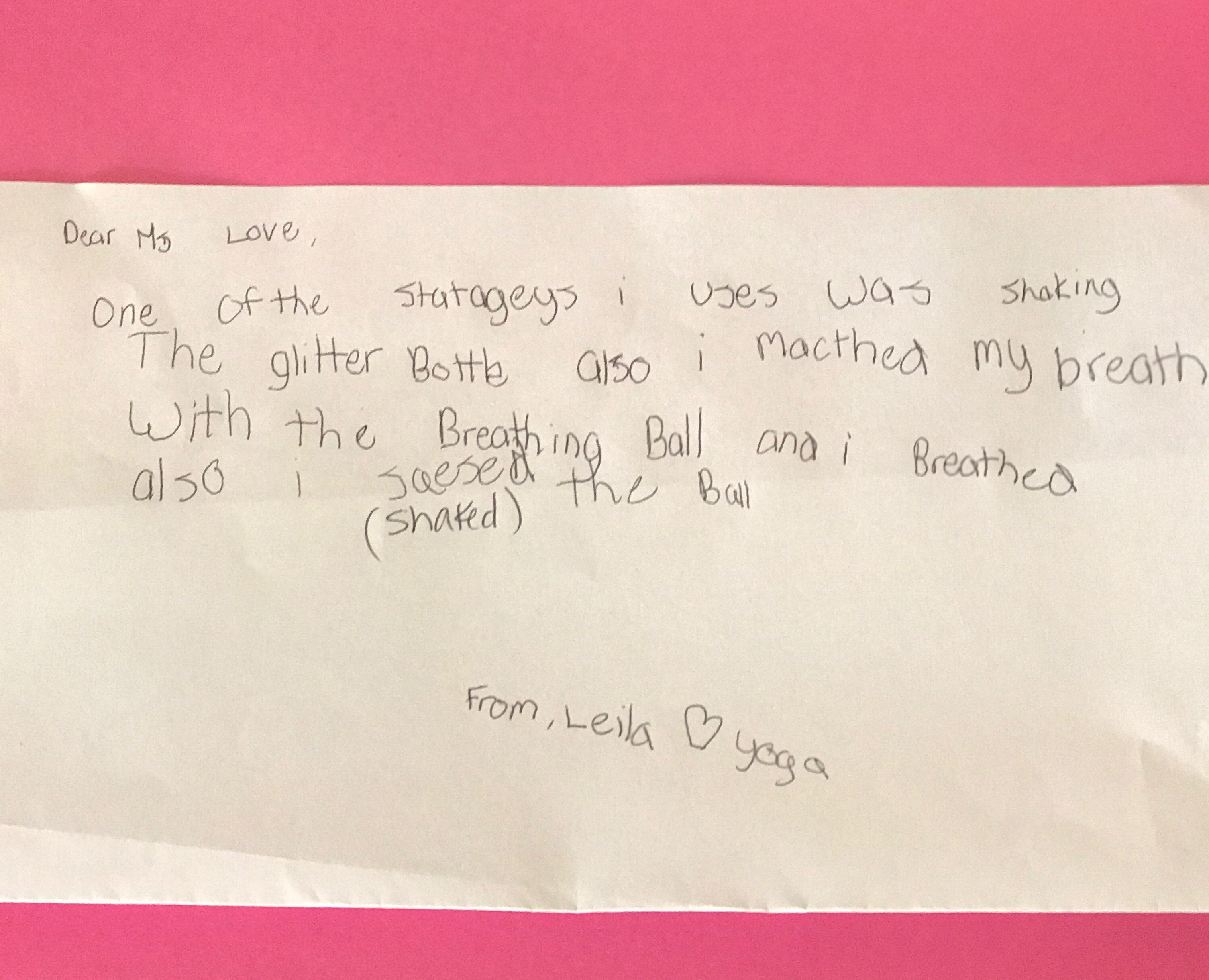

List of items you might want to include in your Peace corner:
- Squishy “stress” ball
- Glitter ball or make your own glitter jar
- Emotional feelings sheet to help identify and record emotions
- Mirror to help identify emotions
- Blank paper, pens, and crayons to draw emotions, write a letter, or to reflect on strategies used in the peace corner
- Hoberman, breathing sphere
- Sand timer
- A soft, small blanket or even a weighted blanket for sensory reasons could be great
The LFY team also created a list of children’s books you might want to include in your peace corner, but it could be great for the kids to make their own book (or video) about what to do in the peace corner:
- I Am Peace: A Book of Mindfulness, by Susan Verde and illustrated by Peter H. Reynolds
- Anh’s Anger, by Gail Silver and illustrated by Christianne Kromer
- Moody Cow Meditates, by Kerry Lee MacLean
- The Mindfulness Coloring Book, by Emma Farrarons
- Yoga and Mindfulness Practices for Children Activity and Coloring Book, by Jennifer Cohen Harper and illustrated by Karen Gilmour
Kelli Love, M.Ed is an educator, presenter, and consultant in the field of children’s mindfulness and yoga. She has 15+ years experience teaching in prek-5th grade contexts, first as a classroom teacher and currently a mindfulness and yoga content specialist at Girls Prep Bronx Elementary. Over 20 years of personal practice guides her teaching, as well as a foundation in Early Childhood Education from Naropa University, where contemplative practices are integrated into higher education experiences. She believes all children have a right to experience the empowering life skills that mindfulness and yoga offer and she hopes to inspire educators to utilize the skills for themselves and in their classrooms.
Kelli is a registered children’s yoga teacher with Little Flower Yoga and is a certified Mindfulness Instructor through Mindful Schools. Little Flower Yoga and Mindful Schools deeply inform her teaching methodology.

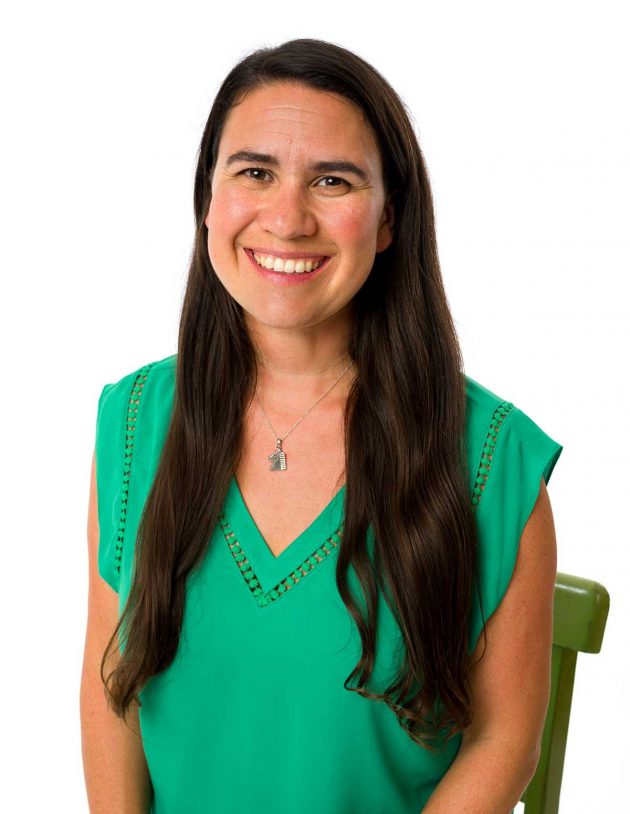








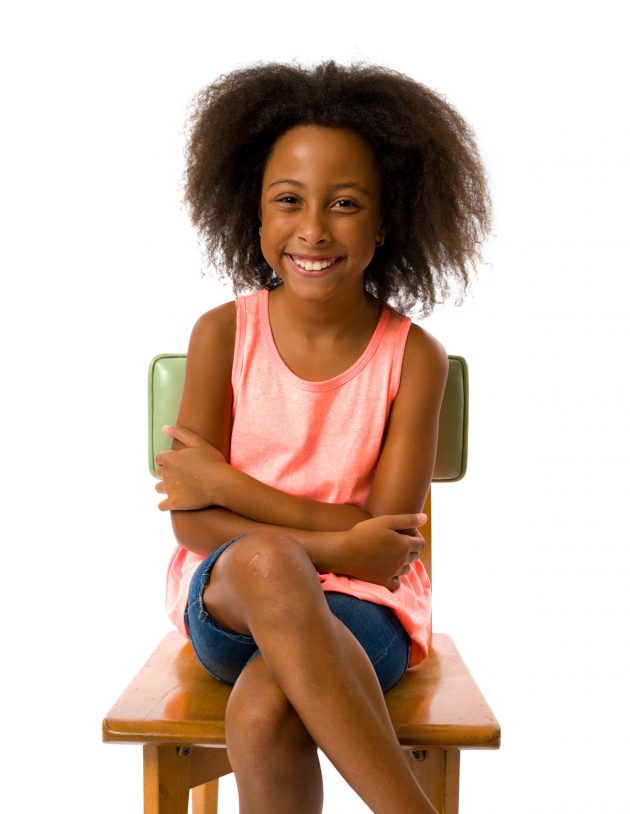


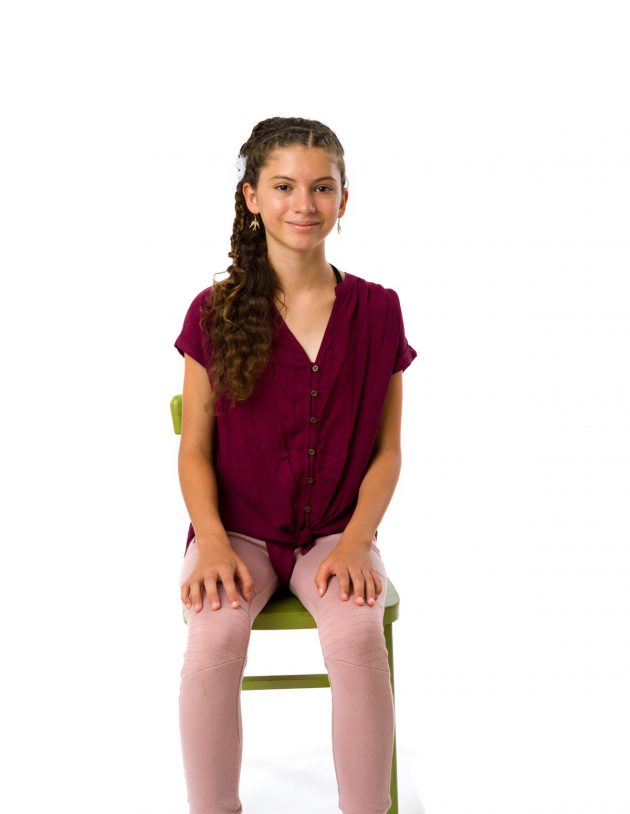




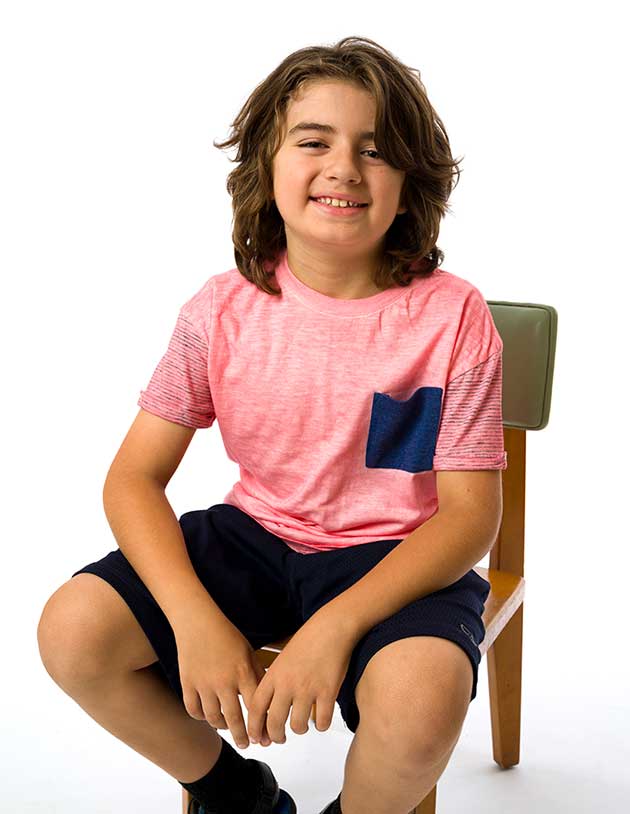

i really like this idea, for personal and professional use. I will present it to teachers in a training next week and also my interns.
Have you used something similar to this in middle school? I’d like to implement, but I need to make sure it is not too primary for my incoming 6th graders. Ideas or suggestions would be greatly appreciated!!
Thank you!
I will implement this techniques in my class
This is a wonderful idea ! I can see elementary classes benefitting from this . I will surely make a suggestion to the school I work at.
I will use this in my classroom
I love this idea. I will use it in my clasroom.
I love this idea. This will help many of my students.
This will help many of my students.
Great idea